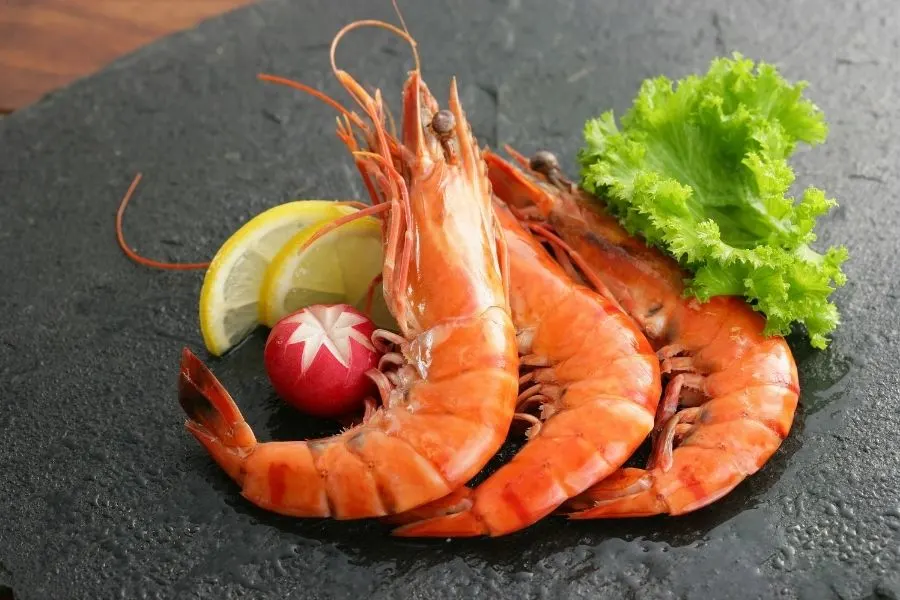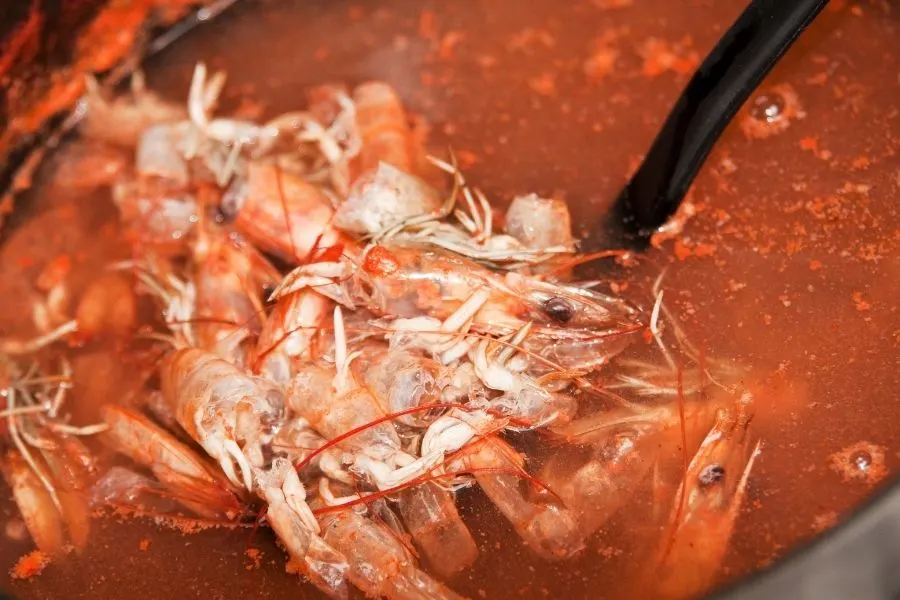If you’re a seafood lover then you’ve definitely had all sorts of shrimp before, often with the tails still on. And you’ve probably seen just about everyone remove those tails before eating, yet most restaurants insist on keeping them on.
Why is this ? Are shrimp tails actually edible ? Are we all missing out on something delicious ? This is what we’re exploring today, as we’re very curious ourselves.

Are shrimp tails edible ?
Yes, you can eat shrimp tails and they are edible, but are not meant to be eaten. They are kept on mostly for flavor and presentation purposes, not necessarily to be eaten. It’s much like the cartilage on chicken bones – some people love it, some pick the meat of it and don’t touch it.
The tails themselves are very chewy and hard, but are easier to chew through when the shrimp is very small. They have a lot of flavor, but you can remove them if you like.
Read also: Are Shrimp Fish, Seafood, Or Shellfish ?
The bigger the shrimp, the harder the shell
Very large shrimp, such as jumbo and colossal, will have larger and harder tails. We don’t recommend eating those tails, as they can be a choking hazard.
Smaller shrimp tails may be easier to chew through, but it’s really up to your personal preferences. All shrimp tails and shells are made of chitin. This is a very hard, brittle material common to all shellfish and insects, and acts as a very tough shield.
As a result, the shells and tails are really not that easy to eat.

Tails are usually kept for presentation
So if they’re technically edible but they’re hard to actually eat, why are they still on your prawn salad ? Well, they simply look nice. Of course, not every dish in the world will have the tails still on. Shrimp cocktail usually has the tails on, as does fried shrimp, or a seafood platter.
In meals where it’s not quick and easy to remove the tails, they usually come off before cooking. Dishes like pasta, salads, paella, stir fries and the likes. Still, it’s ultimately up to the chef if the tails are kept on or not.
While you may feel that a tail-on shrimp in a salad is annoying, the chef may think otherwise. If you’re unsure how the shrimp comes out, be sure to ask the waiter for the tails to be removed.
Tails are also useful when deep frying
There are cases when the shrimp tails are actually useful. No really, hear us out. Depending on what you’re eating and how it’s made, the tail itself can be a really convenient way to hold the shrimp. Think of breaded, fried shrimp. The only part that’s breaded is the meat, and you can hold the tail and bite off the end.
It also makes picking the shrimp out of hot oil easier, if you’ve got tongs or don’t want to disturb the breading while it cooks.
That’s about the extent at which we find the tails useful when eating. We do prefer the tails off, but we understand that sometimes they will come with the tails on.
Leave the shrimp tails on for flavor
If you’re a home cook and want to get a really nice shrimp flavor, keep the tails on. Yes, now you’re that chef that leaves them on. You’re leaving them on for flavor while cooking, but do take them off when they’re done cooking.
The tails, due to their extra chitin and shrimp-ness, actually impart a lot of flavor. This is especially useful when making stock and you want to get the best flavor out there.
Read Also: Why Is Shrimp So Expensive ?
Conversely, keep the shrimp heads for stock
Yes, leave the heads on too ! Again, only when making stock. There are folks who eat the heads too, but these are a little more difficult. You have to pretty much uh, suck the brains out of it. Yeah. Some absolutely love it and claim the flavor is all in the head. Some just find it weird.

Whichever side you’re on, you can’t deny that simmering the heads, along with the tails makes for some really good stock. Much like making any stock, the bones, skin, cartilage and connective tissue contain most of the flavor.
Of course, you can remove the shrimp head after cooking. There’s no reason to keep it on if you don’t want to eat it. If you’ve got an especially picky eater then the heads and tails really need to come off.
And that’s pretty much it about shrimp tails. You can try munching on one if you’re curious, but make sure it’s a small shrimp with a small tail. Or you can just remove them after cooking, whichever way suits you.
Conclusion
So, shrimp tails are safe to eat but I wouldn’t suggest you do that if you want to have a great experience eating shrimp. It can be annoying to get rid of the tails and the skin but it is worth it, the taste and texture of an unshelled shrimp are much better.

